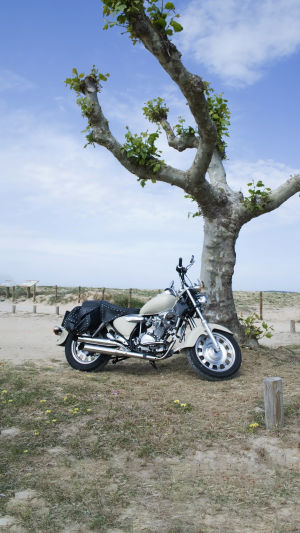Motorcycles, powered by gasoline engines and steered through handlebars controlling the front wheel, are nimble, swift vehicles widely employed for patrol duties, cargo transportation, and even as athletic equipment.
Broadly, motorcycles fall into categories like street bikes, road racing motorcycles, off-road bikes, cruisers, and touring bikes.
When people refer to a motorcycle's engine, they usually mean a gasoline engine. A motorcycle consists of five main components: the engine, transmission system, chassis, steering mechanism, braking system, and electrical instrumentation. The overall structure and names of these components form the essence of a motorcycle.
Motorcycles are classified into street bikes, sports bikes, retro bikes, adventure bikes, cruisers, and touring bikes. Let's begin with sports bikes. Their primary feature includes aerodynamic fairings covering most of the bike, designed for high-speed aerodynamics. The riding posture involves leaning forward with the handlebars lower than the seat, allowing the rider to lie flat against the fuel tank, and reducing wind resistance. These bikes emphasize high-speed performance.
Street bikes, initially derived from sports bikes by removing the fairings, feature independent headlights that pivot with the front forks and expose the engine, earning them the name "NK." These bikes prioritize comfort on city streets, with handlebars usually higher than the fuel tank, forward-set footpegs, and an upright riding posture. They favor low-end torque for easy maneuvering in stop-and-go traffic.
Retro bikes, denoted by "retro," essentially refer to vintage-style street bikes retaining elements like circular headlights, straight waistlines, 'caterpillar' style seats, and twin circular mechanical gauges.
ADV, or adventure bikes, are designed to handle regular roads and also reach places inaccessible to standard motorcycles. They feature upright riding positions with high windshields for long-distance comfort and protection, long-travel suspension for rough terrains, and even specialized tire sizes like 19-inch front and 17-inch rear, compatible with various terrain types like off-road tires and large fuel tanks, often resulting in higher seat heights.
The term "cruiser," often overlapping with touring bikes, is gradually evolving toward a more high-end direction. These bikes feature extensive fairings like sports bikes and high windshields like adventure bikes, isolating the rider from airflow during high-speed, long-distance rides. They possess larger frames, more comfortable seats (yes, seats, not just cushions), and even amenities like onboard entertainment systems and air conditioning, albeit being generally pricier.
Motorcycles have weathered a century of changes and are evolving towards being updated, faster, and safer. The modern motorcycle industry has integrated numerous advanced technologies. For instance, Harley-Davidson's FLHRC-1 introduced in 1998 adopted cutting-edge automotive engine technology—fuel injection systems—not only enhancing performance but also aligning with contemporary environmental needs, pioneering 21st-century motorcycles.
Advanced technologies like optical communication electronic control systems, radar-based distance control systems, electronic map guidance systems, and sound-wave electronic noise-canceling systems have enhanced modern motorcycles, making them more sophisticated and impressive.
Motorcycles, an embodiment of speed, agility, and versatility, continue their journey toward innovation and safety. With a rich array of classifications catering to diverse needs, from speed enthusiasts to long-distance travelers, their evolution, blending tradition with cutting-edge technology, marks an enduring legacy in the realm of transportation and adventure.





